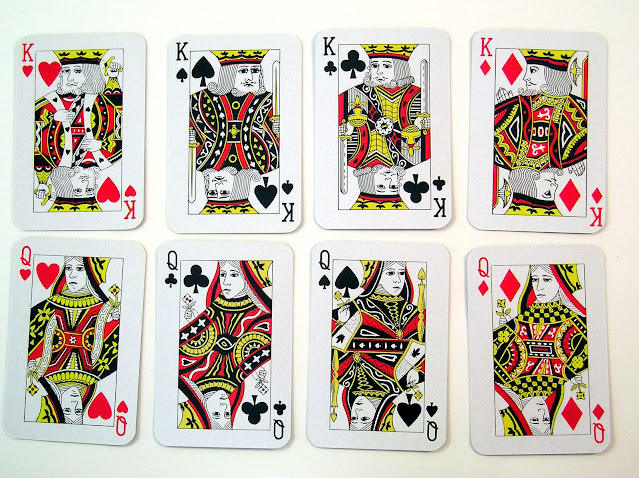Here are 15 trivia facts about playing cards:
- A standard deck of playing cards consists of 52 cards, divided into four suits: hearts, diamonds, clubs, and spades.
- The four suits in a deck of cards are said to represent the four seasons: hearts (spring), diamonds (summer), clubs (fall), and spades (winter).
- The face cards in a deck are the King, Queen, and Jack. They are sometimes referred to as "court cards" or "picture cards."
- The King of Hearts is the only king in a standard deck that does not have a mustache.
- The four kings in a deck of cards are each said to represent a historical figure: King David (Spades), Alexander the Great (Clubs), Charlemagne (Hearts), and Julius Caesar (Diamonds).
- The Queen of Hearts is often referred to as the "suicide queen" due to its depiction of the queen stabbing herself in the head with a sword.
- The Ace of Spades is traditionally considered the highest-ranking card and is often associated with good luck or fortune.
- The concept of the Joker cards in a deck is believed to have originated from the game of Euchre in the 1860s.
- The term "pips" refers to the small symbols or marks on the cards that denote their rank (numbers or face cards).
- Bicycle is one of the most well-known playing card brands and has been producing cards since 1885.
- The world's largest deck of playing cards was created in 2014 and measures 8 feet by 4 feet.
- The oldest known playing cards date back to the 9th century in China, but the modern deck of 52 cards originated in France during the 14th century.
- The practice of using playing cards for fortune-telling or divination is known as cartomancy.
- The highest value card in a deck of playing cards is the Ace, followed by the King, Queen, Jack, and so on.
- Card throwing, also known as "cardistry," is a skill involving intricate and artistic manipulation of playing cards.
These trivia facts provide a glimpse into the rich history and unique characteristics of playing cards.
Source: Some or all of the content was generated using an AI language model


No comments:
Post a Comment